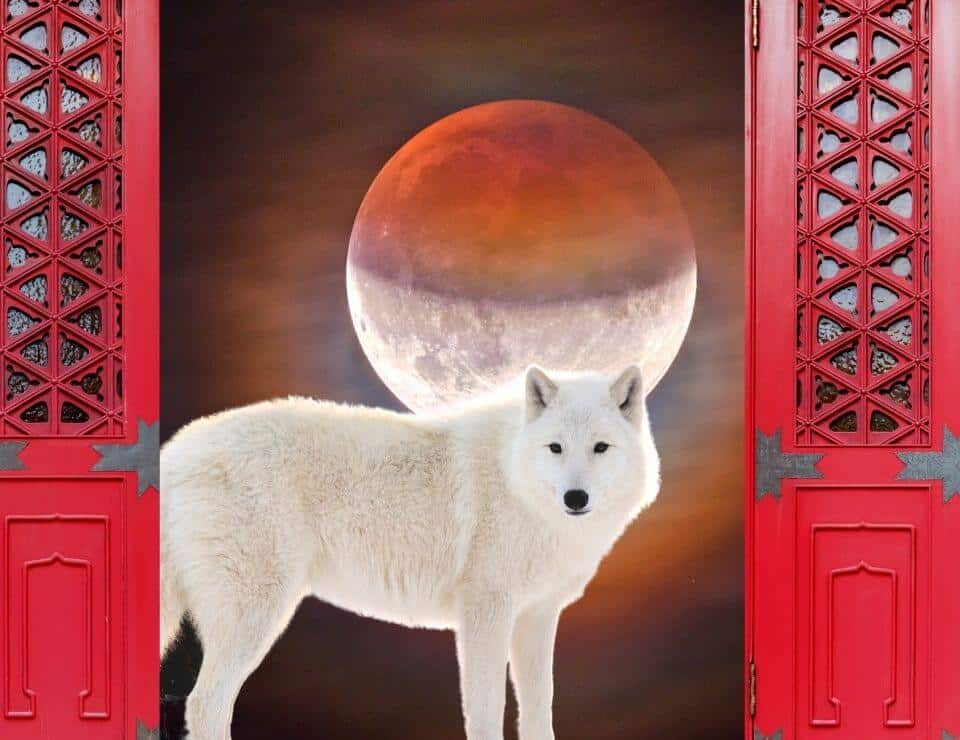Eclipses happen four to six times a year, activating the unexpected and forcing us to take swift action. Ready or not, it’s time for change—and a clear decision.
Dragging your feet? Avoiding the inevitable? Resistance and procrastination are natural; we tend to avoid what’s painful and stay in our comfort zones. Solar and lunar eclipses are dramatic turning points. They provide the cosmic kick in the pants to push us off the fence and into action.
On the upside, if you’ve been waiting around for a clear sign or answer, an eclipse will speed up the process.
What are eclipses in astrology?
Eclipses are these agents of change. They occur four to six times a year and turn things upside-down. In our disoriented state, we may act out of character or see turbulence in the world. Eclipses can also help break patterns and shift dynamics. However, most astrologers suggest waiting a week or so before taking drastic action, allowing the eclipse energy to settle first.
Solar eclipses occur at new moons
During solar eclipses, the moon is directly between the Earth and Sun (known as a conjunction, or meetup, of the Sun and the moon). During this brief time, the moon can block out the Sun’s light, temporarily disconnecting us from our sense of reality. Solar eclipses occur at new moons.
In astrology, a solar eclipse could bring a bold beginning, setting us on a new path that we hadn’t imagined for ourselves. While it may be surprising—or not something you even expected—a solar eclipse has a bigger vision in store for us. We have a finite focus as human beings, and it’s natural to concentrate on what’s in front of us. At times, this can limit our perspectives, and cause us to miss out on opportunities.
Solar eclipses might snatch away the familiar temporarily, forcing us to consider options we would never otherwise explore. Although this can cause upheaval, eclipses are “cruel to be kind.” Major growth can happen during these cosmic power outages. This is when we should leap into new (and generally improved) terrain, even if we feel forced there by circumstances beyond our control.
Lunar eclipses occur at full moons
A lunar eclipse occurs when the moon is nearing its full state and enters the Earth’s shadow. During lunar eclipses, the Earth is exactly between the Sun and the moon (known as an opposition between the Sun and the moon). For a brief spell, we can see the Earth’s shadow turning the luminous full moon intense shades of reds, browns and grays. Depending on where in the world you are, an eclipse may be visible. Lunar eclipses occur at full moons.
According to astrology, lunar eclipses give us a glimpse into what Carl Jung referred to as the “shadow self.” We all want to think of ourselves as good, kind people, but hey—we’re also human! What we discover about ourselves and others during lunar eclipses can be tough to admit, even shocking. Still, this gives us the opportunity to embrace our wholeness, and see where we have room to grow in new directions.
Owning the fact that we have emotions (like fear, anger, jealousy and rage) is the first step to getting a handle on them. Trying to pretend we’re perfect or stuffing down our feelings? That’s when our unexamined issues creep up and overwhelm us. If we’re willing to suspend judgment and accept the good along with the bad, lunar eclipses can be potent moments of self-discovery.
Why eclipses were once feared
Eclipses throughout history have gotten a bad rap. They were both revered and feared. The ancients were baffled by the Sun’s “disappearance” from the sky during a solar eclipse, so they made up stories involving angry (or “hangry”) gods eating the Sun!
Because eclipses have correlated with climate catastrophes, such as hurricanes, tsunamis and earthquakes, many cultures believed that eclipses angered the gods. During lunar eclipses, people were known to act “loony” (root word: lunatic, which is of the root word lunar)—and in our own informal observation, we’ve noticed that, too. However, Western science has only confirmed a single fact: We need to protect our eyes if we watch a solar eclipse!
Rituals for solar and lunar eclipses
Rituals for new and full moons are becoming more popular by the day. At an eclipse, a ritual can help you stay grounded in the face of any chaos, especially if you set dedicated intentions.
Solar eclipse rituals
Solar eclipses fall at new moons, so a ritual or intention-setting could focus on helping you start anew. Themes could include: finding the courage to make a fresh start, embracing change, taking a risk (even if you’re scared), putting yourself out there, making a big reveal/coming out of the metaphorical closet.
Lunar eclipse rituals
Lunar eclipses fall at full moons, which are times of ending, closure, manifestation and transition. Lunar eclipse rituals may center around having a huge breakthrough, pushing past barriers and limits, letting go of a painful situation for good, breaking free of an addictive pattern, healing or releasing.
You may want to do a zodiac-specific ritual depending on which sign the eclipse falls in astrologically. Follow our tips for new and full moon rituals and gatherings. You can do a ritual by yourself or gather with friends to amplify your intentions.
Eclipses and the Lunar Nodes of Astrology
Lunar nodes—the “destiny points” in astrology—are tied to the eclipses
The lunar nodes are determined by the points where the moon’s orbit crosses the “ecliptic”—the apparent path the Sun makes around the earth that is the basis of Western astrology. The north and south nodes in your chart are determined by where the eclipses were happening. So from a mystical perspective, eclipses are tied to our past lives, karmic paths and soul missions!



